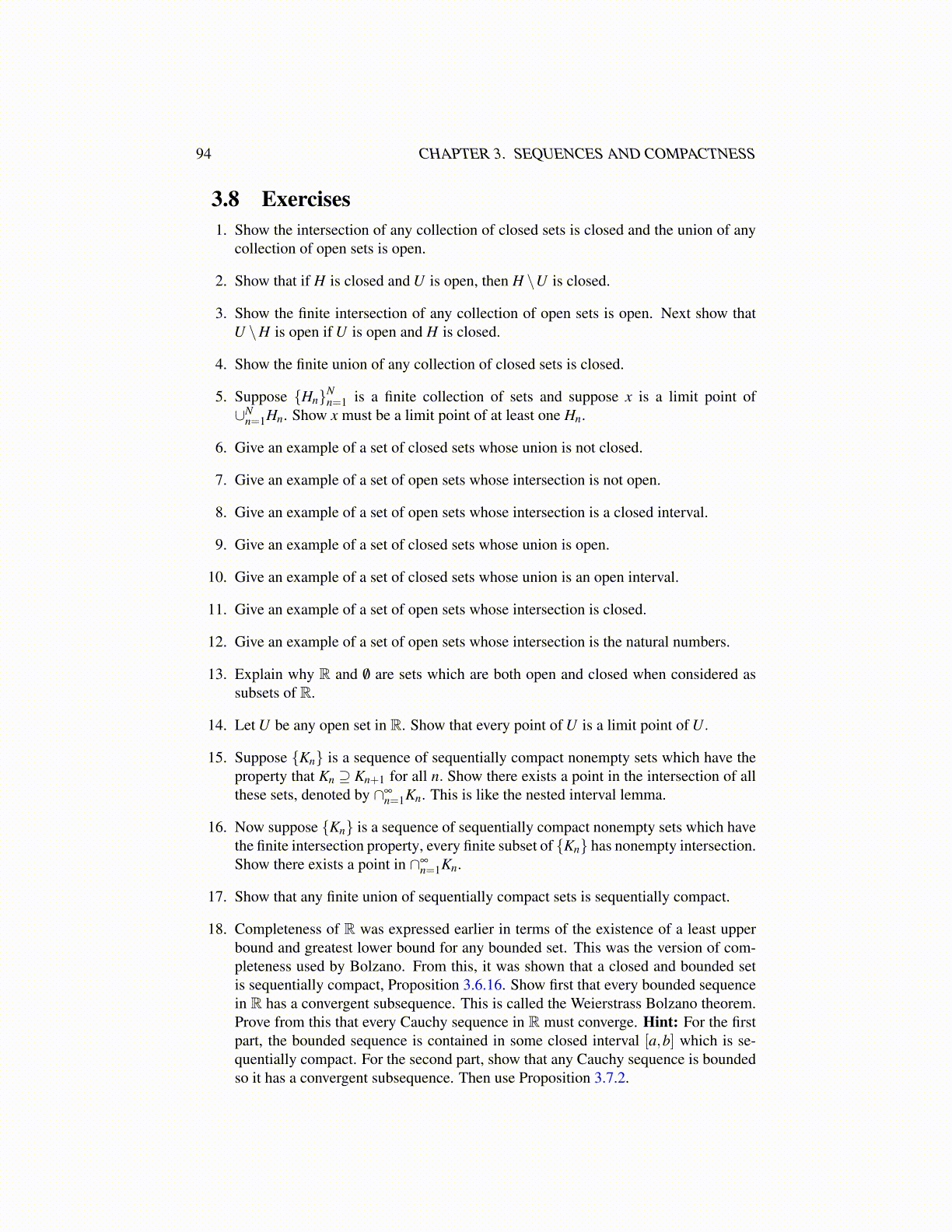
94 CHAPTER 3. SEQUENCES AND COMPACTNESS
3.8 Exercises1. Show the intersection of any collection of closed sets is closed and the union of any
collection of open sets is open.
2. Show that if H is closed and U is open, then H \U is closed.
3. Show the finite intersection of any collection of open sets is open. Next show thatU \H is open if U is open and H is closed.
4. Show the finite union of any collection of closed sets is closed.
5. Suppose {Hn}Nn=1 is a finite collection of sets and suppose x is a limit point of
∪Nn=1Hn. Show x must be a limit point of at least one Hn.
6. Give an example of a set of closed sets whose union is not closed.
7. Give an example of a set of open sets whose intersection is not open.
8. Give an example of a set of open sets whose intersection is a closed interval.
9. Give an example of a set of closed sets whose union is open.
10. Give an example of a set of closed sets whose union is an open interval.
11. Give an example of a set of open sets whose intersection is closed.
12. Give an example of a set of open sets whose intersection is the natural numbers.
13. Explain why R and /0 are sets which are both open and closed when considered assubsets of R.
14. Let U be any open set in R. Show that every point of U is a limit point of U.
15. Suppose {Kn} is a sequence of sequentially compact nonempty sets which have theproperty that Kn ⊇ Kn+1 for all n. Show there exists a point in the intersection of allthese sets, denoted by ∩∞
n=1Kn. This is like the nested interval lemma.
16. Now suppose {Kn} is a sequence of sequentially compact nonempty sets which havethe finite intersection property, every finite subset of {Kn} has nonempty intersection.Show there exists a point in ∩∞
n=1Kn.
17. Show that any finite union of sequentially compact sets is sequentially compact.
18. Completeness of R was expressed earlier in terms of the existence of a least upperbound and greatest lower bound for any bounded set. This was the version of com-pleteness used by Bolzano. From this, it was shown that a closed and bounded setis sequentially compact, Proposition 3.6.16. Show first that every bounded sequencein R has a convergent subsequence. This is called the Weierstrass Bolzano theorem.Prove from this that every Cauchy sequence in R must converge. Hint: For the firstpart, the bounded sequence is contained in some closed interval [a,b] which is se-quentially compact. For the second part, show that any Cauchy sequence is boundedso it has a convergent subsequence. Then use Proposition 3.7.2.